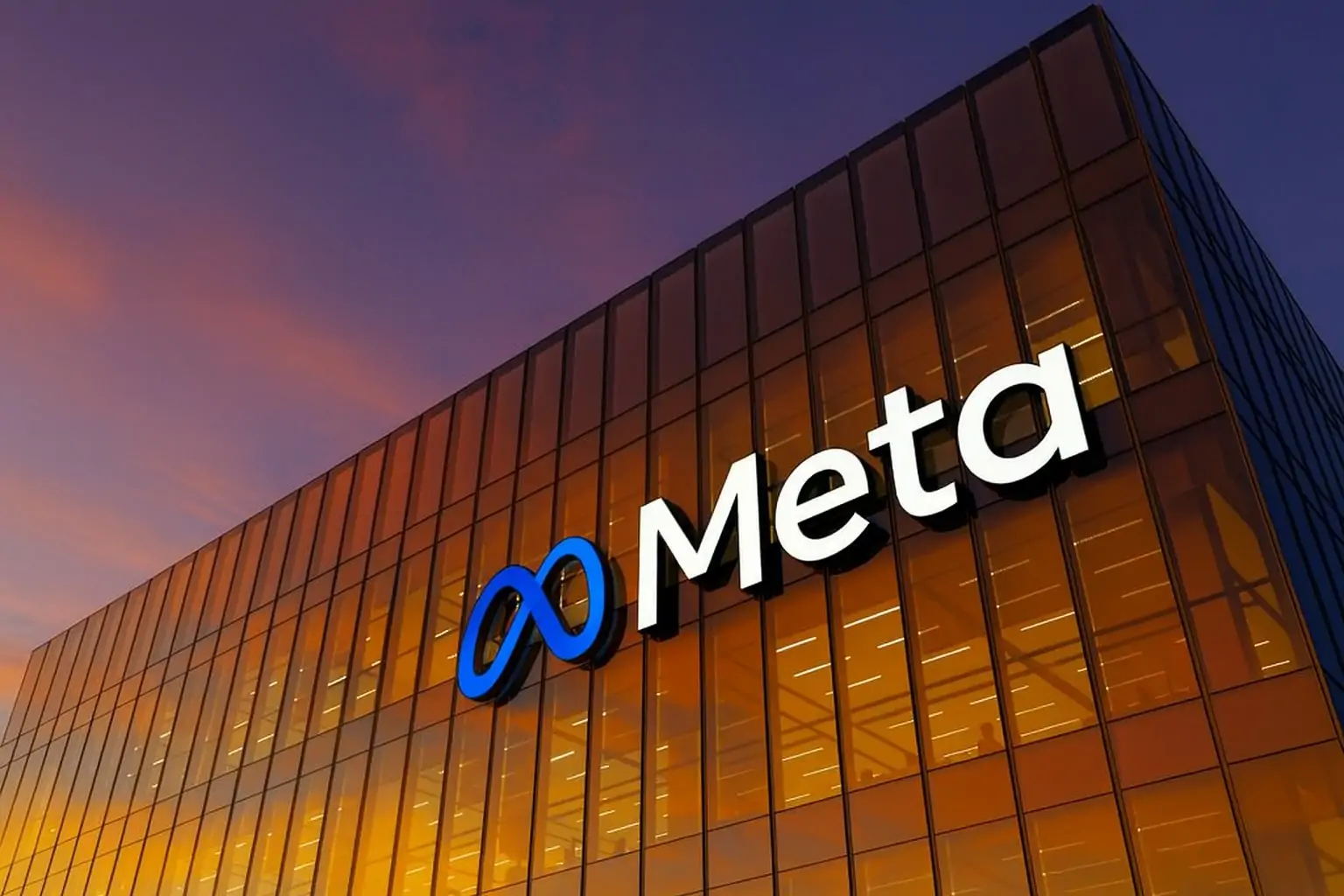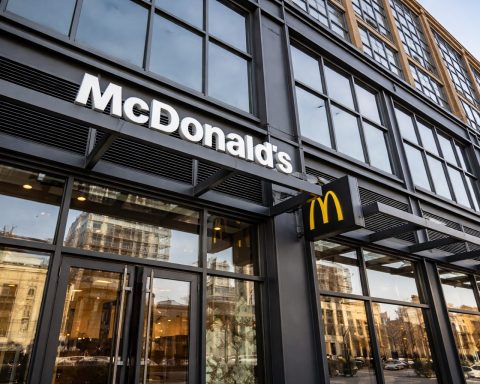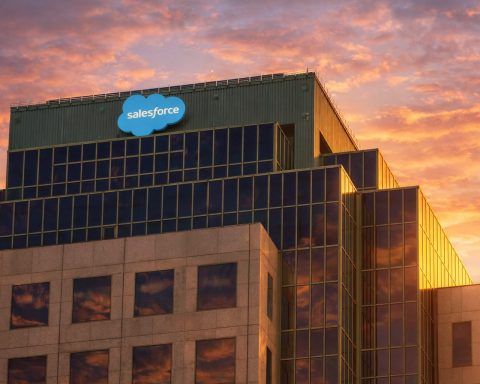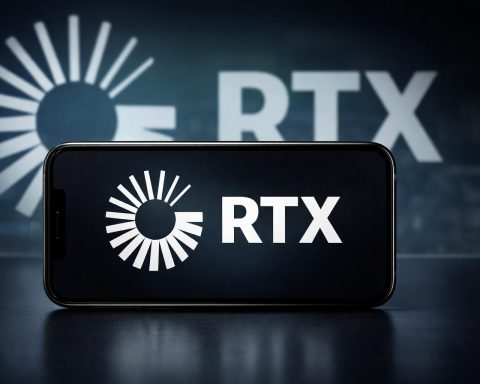Meta Platforms Inc. (NASDAQ: META) is at a pivotal moment in late 2025. The social media and tech giant is delivering surging revenue growth powered by advertising momentum and new AI initiatives, yet its aggressive spending plans and regulatory challenges have given some investors pause. Below we analyze Meta’s latest financial performance, recent news (product launches, AI/metaverse developments, and regulatory updates), investor sentiment, valuation metrics, and the outlook for META stock in the coming months.
Robust Q3 Earnings Growth with One-Time Profit Hit
Meta’s third-quarter 2025 earnings showcased exceptionally strong top-line growth. Revenue jumped to $51.24 billion, up 26% year-over-year, handily beating analyst expectations [1]. This growth was fueled by higher engagement and improved ad targeting – Meta delivered 14% more ad impressions and saw the average price per ad rise 10% YoY [2], reflecting strong advertiser demand. Daily active people across Meta’s “family of apps” (Facebook, Instagram, WhatsApp, etc.) hit 3.54 billion in September, an 8% increase from a year prior [3], underscoring the platform’s continued global user expansion.
However, GAAP profits were distorted by a one-time tax charge of $15.93 billion related to a new U.S. tax law. This drove Meta’s effective tax rate to 87% and slashed reported net income to $2.71 billion (GAAP EPS of $1.05) [4]. Excluding that non-cash charge, adjusted Q3 net income would have been about $18.6 billion with EPS around $7.25 [5] – meaning underlying earnings actually grew healthily year-over-year. Management noted the tax impact should reduce future cash tax payments, essentially a one-off accounting hit [6].
Aside from the tax item, Meta’s core business profitability remains strong but under pressure from rising costs. Operating income was $20.5 billion in Q3 (a 40% margin, down from 43% a year ago) as expenses soared 32% YoY to $30.7 billion [7]. The company has been ramping up investments in technology and personnel after prior cost-cutting. CFO Susan Li explained that expense growth accelerated due to legal expenses, AI talent hires, and massive infrastructure spend [8]. Notably, Reality Labs (AR/VR division) continues to weigh on profits – it generated only $470 million revenue in Q3 against a $(4.4) billion operating loss [9], consistent with Meta’s ongoing heavy investment in the metaverse.
Meta’s Q3 report also offered optimistic guidance. The company projects Q4 2025 revenue of $56–59 billion, about 20% growth at the midpoint [10], as advertising momentum stays strong (partially offset by a tough comp in AR/VR hardware sales) [11]. For full-year 2025, management slightly raised the expense outlook to $116–118 billion (22–24% YoY increase) and capital expenditures to $70–72 billion [12]. In short, Meta is spending aggressively on AI and infrastructure to seize future opportunities, even as it delivers near-term revenue beats. This balancing act – exceptional revenue growth versus surging costs – set the stage for the stock’s recent volatility.
Stock Slips on Spending Fears, But Analysts Stay Bullish
After a strong rally through most of 2025, Meta’s stock pulled back in November on those rising cost concerns. Shares had climbed to an all-time high around the mid-$700s prior to earnings, but dropped roughly 15% this month as investors digested the hefty AI capex plans [13] [14]. In the four trading days after earnings, META fell nearly 17%, wiping out over $300 billion in market value [15]. As of mid-November, the stock trades around $610 (market cap ~$1.5–1.6 trillion), about 23% below its recent peak [16] [17].
Wall Street, however, largely views the dip as an opportunity rather than a red flag. Wedbush Securities just added Meta to its “Best Ideas” list, reiterating an outperform rating with a $920 price target – implying ~50% upside from current levels [18]. Wedbush argues the sell-off is overdone given Meta’s robust fundamentals, noting that heavy AI spending is justified by tangible gains in advertising efficiency and user engagement [19]. In their view, Meta’s investments in AI and the metaverse are positioning it for long-term dominance, and the recent pullback created a more attractive entry point [20].
Broader analyst sentiment is overwhelmingly positive. Of 57 analysts covering META, 45 rate it a “Strong Buy” (with only one lone “Sell”), and the average 12-month price target is ~$844 [21]. That consensus target suggests nearly 40% upside from current prices [22]. Even assuming more conservative multiples, Meta’s valuation appears reasonable relative to growth: at ~$610 per share, it trades around 25–26× 2024 earnings, near its historical average P/E of ~24.5 [23]. Analysts forecast Meta’s annual revenue to rise from ~$164.5B in 2024 to $347B by 2029 (~16% CAGR), with EPS growing ~10% annually (from ~$24 to ~$38) over that span [24]. This implies a PEG ratio near 1.5 and potential for multiple expansion if Meta can sustain double-digit growth. In the near term, 2025 GAAP EPS will be depressed by the tax charge (down slightly year-over-year), but underlying earnings power is strong – Meta is on track for over $22 in adjusted EPS this year and a rebound to ~$29+ in 2026 as one-time effects abate [25].
Overall, investor sentiment remains optimistic despite short-term jitters. The market recognizes Meta’s unparalleled scale and improvements in its core ad business. The recent sell-off largely reflects margin concerns, but the company’s ability to drive revenue and cash flow is unquestioned. With roughly $44 billion in cash on hand and over $10.6B in quarterly free cash flow [26], Meta has ample financial firepower to fund its ambitions (and it continues opportunistic buybacks, repurchasing $3.16B in stock in Q3 [27]). The key question is whether those ambitious AI and metaverse investments will pay off – and on that, Wall Street’s current bet is “yes.”
November 2025 Developments: Products, AI Advances, and Metaverse Moves
Recent weeks have brought a flurry of Meta news beyond earnings, spanning new product launches, AI initiatives, and metaverse progress:
- AR & VR Products: At its annual Meta Connect conference, the company unveiled its first smart glasses with a built-in display – the Meta Ray-Ban Display, priced at $800 [28] [29]. These augmented reality glasses include the new Meta Neural Band wrist controller for gesture input, marking Meta’s next step toward mainstream AR wearables. The launch follows last year’s introduction of the Quest 3/3S VR headsets and this year’s updates to Ray-Ban and Oakley camera glasses [30] [31]. While consumer AR/VR adoption is still nascent, Meta continues to iterate on hardware and integrate its platforms. The Reality Labs division remains a long-term bet – its revenues (~$1.3B for the first nine months of 2025) are still <1% of Meta’s total [32] [33], but Meta shows no signs of slowing investment. New VR software improvements (e.g. a faster Horizon Worlds engine to support larger virtual experiences) and a slate of VR game/content releases in time for the holidays demonstrate Meta’s commitment to leading the metaverse market.
- AI Assistant & Generative AI: Meta has made huge strides in consumer AI. Meta AI, the company’s text-based assistant available across WhatsApp, Messenger, Instagram and a standalone app, reached 1 billion monthly active users by mid-2025 [34]. This doubled its user count from late 2024, a testament to the feature’s rapid adoption. CEO Mark Zuckerberg noted the focus now is on deepening the AI experience – adding more personalization, voice interactions, and creative tools – before fully monetizing it [35]. In fact, Meta is already exploring ways to commercialize AI, such as premium services or “paid recommendations” for its assistant in the future [36], potentially competing with the likes of OpenAI’s ChatGPT. For now, Meta is prioritizing growth and integration of AI into its ecosystem (e.g. letting users generate images in chats or interact with AI characters). By building a massive user base and data advantage in AI assistants, Meta could unlock new revenue streams down the line.
- Advertising AI Innovations: Meta is leveraging AI to supercharge its core advertising platform. It developed a new Generative Ads Recommendation Model (GEM) – a large-scale AI model (inspired by large language models) that acts as a “central brain” to improve ad targeting [37] [38]. Since launching earlier in 2025, GEM’s deployment across Facebook and Instagram has boosted ad conversions by 3–5% on those platforms [39]. Meta’s AI-driven ad tools are delivering real results: management noted that end-to-end AI ad products now drive $60+ billion in annual ad spend across its platform [40]. For example, automated ad products like Advantage+ are widely adopted – CFO Susan Li highlighted a 14% reduction in customer acquisition costs for advertisers using these AI tools [41]. These improvements help Meta better target ads despite privacy restrictions, thereby attracting advertiser dollars and offsetting headwinds from Apple’s past tracking changes. In Q3, Meta unified many of its ad models into simpler, more general systems, and it ultimately envisions merging the AI systems that power Facebook, Instagram, and ads into one unified AI engine [42]. This could yield further efficiency and performance gains.
- User Engagement & New Platforms: Thanks in part to AI-driven recommendations, Meta is seeing record engagement on newer content formats. Short-form videos (Reels) continue to explode – Instagram users’ video watch time jumped over 30% year-over-year [43]. Meta revealed that Reels now has a $50 billion annual revenue run-rate across Facebook and Instagram [44], an astonishing figure that underscores how successfully Meta has monetized the TikTok-style format. Another highlight is Threads, Meta’s text-based social app launched in 2023 as a X/Twitter alternative. After an initial surge and drop-off, Threads usage is climbing again – it surpassed 150 million daily active users in Q3 [45]. If Threads sustains this engagement, Meta could introduce ads there in the future, creating yet another revenue lever. Additionally, Meta’s push into business messaging is gaining traction: users now have over 1 billion daily message threads with businesses across WhatsApp, Messenger and Instagram [46]. Meta is improving AI chat capabilities for businesses, which could let millions of companies automate customer interactions and drive sales via messaging [47]. This points to a substantial monetization opportunity in the medium term (through API fees, click-to-message ads, etc.), as WhatsApp and Messenger historically have been under-monetized relative to their user base.
- Massive AI Infrastructure Projects: Behind the scenes, Meta is undertaking an unprecedented buildout of computing infrastructure to support its AI ambitions. The company disclosed plans for its first “gigawatt-plus” data center cluster (code-named Prometheus) coming online in 2026 [48]. It also has a pipeline for at least one more AI supercomputing cluster that could scale up to 5 GW [49]. These facilities – each on the scale of powering a small city – will be used to train and run Meta’s advanced AI models (for ads, content recommendation, generative AI, etc.). Meta’s management openly acknowledges that 2026 capex will surge even higher than 2025’s ~$70B as they “invest aggressively” to meet exploding AI compute needs [50] [51]. While eye-popping in cost, these investments aim to ensure Meta doesn’t fall behind in the AI race against peers like Google and OpenAI. Zuckerberg even created a new unit called Meta Superintelligence Labs, recruiting top researchers (with “the highest talent density in the industry” by his claim) to develop next-generation AI models [52]. The payoff they envision is a future where AI enhances every Meta product – from ultra-personalized feeds to intelligent glasses – reinforcing user engagement and opening new monetization avenues.
In sum, November 2025 finds Meta aggressively expanding its product ecosystem and AI capabilities. The company is launching cutting-edge AR hardware and doubling down on the metaverse, even as it infuses AI into ads and user features across its family of apps. These moves cement Meta’s reputation as an innovator, but they come with significant costs and execution challenges that investors are carefully watching.
Regulatory and Legal Headwinds in Focus
Meta’s growth plans are unfolding under increasing regulatory scrutiny, especially in Europe. Several recent developments highlight the policy risks the company faces:
- EU Digital Services Act (DSA) Compliance: In late October, the European Commission issued preliminary findings that Meta’s platforms breached the DSA – specifically, Meta was not making it easy enough for users to report illegal content, nor providing required data access to researchers [53] [54]. These are obligations for “very large online platforms” under the new DSA rules. Meta (as well as TikTok) now has a chance to respond, but the Commission could ultimately impose fines up to 6% of global annual turnover if violations aren’t remedied [55] [56]. For Meta, 6% of revenue would be on the order of ~$10–12 billion – a hefty penalty – so there is strong incentive to comply. This episode underscores Europe’s tougher stance on Big Tech accountability. Meta will likely need to enhance its user reporting systems and data transparency to satisfy regulators and avoid punitive action.
- Targeted Ads and Privacy Regulations: The EU is also cracking down on personalized advertising models. Meta has been embroiled in a long battle over its use of personal data for ads. To address EU privacy rulings, Meta introduced ad-free subscription options for Facebook and Instagram in the EU (and recently the UK). In November, UK users got the option to pay £2.99/month on web (£3.99 on mobile) for an ad-free experience [57] [58] – otherwise, they must consent to data-driven ads as usual. Similar subscriptions were rolled out across the EU earlier in 2025. Meta says this “pay or ads” choice gives people more control and preserves a free, ad-supported option [59]. Regulators, however, are not fully satisfied. European authorities argue that a paid tier isn’t a truly equivalent alternative to free targeted ads, and they are urging Meta to offer a free version with less-intrusive contextual ads by default [60] [61]. In fact, the EU fined Meta €390M in early 2023 over forced consent for personalized ads, and additional penalties loomed. Meta is appealing some decisions, but the writing on the wall is that it may have to further restrict data usage in Europe, which could dent ad revenues. Meta itself cautioned that changes to its “Less Personalized Ads” offering in the EU could have a “significant negative impact” on European revenue as early as this quarter if stricter rules are enforced [62].
- Alleged Algorithmic Discrimination: In another European case, France’s Equal Opportunities regulator (Defendeur des Droits) ruled in October that Meta’s ad delivery algorithms were indirectly discriminating based on gender in job advertisements on Facebook [63] [64]. The watchdog found that Facebook was showing certain job ads disproportionately to one gender, which violates anti-discrimination laws. It gave Meta three months to outline corrective measures. Meta has rejected the ruling and is assessing options [65] [66], but this marks the first time a European regulator held a social platform’s algorithm legally discriminatory [67]. It’s a notable precedent – signaling that Meta’s AI-powered content sorting could come under human rights scrutiny if it’s seen to produce biased outcomes. While any fines here would likely be small, the reputational and operational implications are important. Meta may need to tweak its algorithms or ad targeting processes to prevent inadvertent bias, under the gaze of EU regulators.
- U.S. Legal Challenges: In the United States, Meta faces its own set of legal risks. Most prominently, numerous state attorneys general and users have filed lawsuits accusing social media (including Meta’s platforms) of harming youth mental health. These cases are progressing, with some youth safety trials scheduled for 2026 [68]. Meta disclosed that an unfavorable outcome in these trials “may ultimately result in a material loss” [69] – suggesting the company could face significant damages or mandated changes to its practices. Separately, the FTC continues to watch Meta after earlier antitrust efforts (like attempting to block Meta’s acquisition of a VR startup in 2022). And while not directly impacting Meta yet, broader tech antitrust actions (e.g. the DOJ’s case against Google) indicate a tougher climate. Regulatory headwinds in the U.S. are increasing, from children’s online safety laws to potential new privacy regulations. Meta will need to navigate these carefully to avoid litigation costs or forced business changes.
In summary, regulation is a key risk factor in Meta’s outlook. The company is under pressure to adapt its advertising model in Europe to comply with privacy laws – a shift that could weigh on revenue in that region. Fines (like the €1.2B penalty in Ireland for data transfers in 2023) and operational restrictions are a real possibility if Meta doesn’t find workable solutions. On the other hand, Meta’s proactive moves (offering subscriptions, appealing decisions, adjusting data practices) show it’s actively engaging with regulators. How Meta balances compliance with its ad-driven business model will be crucial going forward. Investors should expect continued headlines out of Brussels and Washington – whether it’s new rules on AI, content moderation demands, or privacy and antitrust enforcement – as governments seek to rein in Big Tech power. Meta itself explicitly warns that regulatory developments on both sides of the Atlantic could significantly impact its business in the coming quarters [70] [71].
Key Financial Metrics and Valuation
Meta’s financial profile in late 2025 reflects a company delivering strong growth and healthy cash flows, tempered by heavy investment:
- Revenue Growth: After a modest downturn in 2022, Meta’s top-line growth has rebounded dramatically. The company is on pace for roughly $198 billion in revenue in 2025, up about 20% from $164.5B in 2024 [72]. The 26% YoY jump in Q3 2025 was its fastest growth since 2021. Analysts expect double-digit growth to continue near-term – with sales projected to rise ~16% annually on average through 2029 [73]. Key drivers are higher advertising demand (thanks to Reels and better targeting) and potential new revenue streams (messaging, AI services) offsetting any mature-market saturation. Meta’s ability to grow at this scale (over $50B per quarter in revenue) underscores its entrenched position in the digital ad market.
- Profitability: Meta’s adjusted operating margins remain robust, ~40% recently, but have slipped from mid-40s historically due to expense growth [74]. Net margin in Q3 was abnormally low (~5%) on a GAAP basis because of the tax charge, but excluding that Meta would have netted ~36% of revenue in profit [75]. For full-year 2025, Wall Street expects Meta to earn around $22–23 in EPS (non-GAAP) which is roughly $55–60B in net income – a slight decline from 2024’s ~$28 EPS if not for the tax hit [76]. Looking ahead, consensus sees EPS growth reaccelerating ~30% in 2026 as revenue climbs and one-time costs disappear [77]. Meta is spending aggressively, but if those investments drive additional revenue, profit growth should follow. A key metric to watch is free cash flow, which was $10.6B in Q3 [78] (down year-on-year due to a spike in capex). Despite record capex, Meta still expects to produce over $35B in free cash flow for full-year 2025. This speaks to its operating efficiency and pricing power – few companies can invest at Meta’s scale and remain so cash-generative.
- Valuation Metrics: At ~$610 per share, Meta’s forward P/E sits around 26× 2024 earnings. This is in line with the company’s historical average (~25×) over the past decade [79]. Given an anticipated ~10% EPS CAGR, the PEG ratio ~2.5 might appear high, but if one adjusts for the temporary earnings dip and expects faster post-2026 growth from AI monetization, Meta’s valuation looks more attractive. Its EV/EBITDA and P/FCF ratios are also reasonable compared to large-cap tech peers – Meta’s enterprise value is about 17× its 2025E EBITDA (adjusted for the tax charge). On a price-to-sales basis, META trades around 7.7× trailing 12-month revenue, which is higher than Alphabet (~6×) but far below high-growth cloud or AI companies. The premium reflects Meta’s dominant social media franchise and improved growth trajectory this year. Meanwhile, Meta’s balance sheet is fortress-like (net cash position) and it carries no long-term debt, giving it flexibility that many peers lack.
- Key Operating Metrics: Investors are also monitoring user and usage metrics. Facebook’s family of apps continues to expand – Family monthly active people hit 3.96 billion in Q3, up 7% YoY [80]. Average revenue per user (ARPU) has been rising especially as ad targeting improves. In Q3, ad impression growth (14%) combined with price per ad growth (10%) yielded the 26% ad revenue jump [81] – a very positive sign that Meta has overcome headwinds from Apple’s 2021 ATT changes. The fact that Reels now contributes ~$50B in annualized revenue [82] signals that Meta has successfully shifted user behavior and advertiser spend into new formats. Another notable metric is headcount: after layoffs in 2022–23 (“year of efficiency”), Meta’s workforce is growing again, up 8% YoY to ~78,400 employees [83], mainly to support AI initiatives. This hiring, while adding cost, is intended to secure top talent in AI – a wise move if it results in new innovations that keep Meta ahead of competitors.
In short, Meta’s fundamentals are strong. The company is enjoying a resurgence in revenue and engagement, and it remains highly profitable even as it pours money into R&D. The stock isn’t the bargain it was at the 2022 lows, but it’s also not obviously overvalued given Meta’s scale, growth, and margin profile. The market is effectively pricing in skepticism about whether Meta can maintain its current growth and eventually moderate spending – which leaves room for upside surprises if efficiency improves or new revenue streams come online.
Outlook and Forecast: Risks and Opportunities Ahead
Looking forward, Meta’s trajectory presents both significant upside potential and a set of risks that investors should weigh:
Opportunities/Bullish Drivers:
- Advertising Strength and AI Monetization: Meta’s core digital ad business is firing on all cylinders. Improvements in AI-driven ad targeting are boosting advertiser ROI, which in turn attracts more ad spend. With AI models like GEM and Advantage+ enhancing ad relevance and conversion rates [84] [85], Meta can continue growing ad revenue even if user growth slows. There is also headroom to further monetize Reels (e.g. increasing ad load) and eventually introduce ads on Threads. Importantly, Meta is expanding into AI advertising tools for businesses of all sizes – its Advantage+ suite automates campaign creation and has been very popular. Additionally, as third-party data becomes scarcer (due to privacy rules), advertisers may concentrate budgets on platforms with strong first-party data and AI – an edge for Meta.
- New Revenue Streams: Beyond traditional ads, Meta is cultivating entirely new businesses. One is click-to-message ads and WhatsApp for Business, tapping into the huge messaging user base. If Meta can charge businesses for customer chats or lead generation on WhatsApp, it could unlock billions in high-margin revenue. Another future stream is the Meta AI assistant – while free now, Meta could introduce premium features or enterprise integrations (imagine businesses paying to have customized AI agents on Meta’s platforms). Zuckerberg has hinted at subscriptions for AI usage or paid “metaverse” services down the road [86]. Even the nascent metaverse/AR efforts could pay off in the longer term: if AR glasses or VR worlds gain mainstream adoption, Meta would be positioned to dominate that ecosystem (through device sales, app stores, and VR advertising or commerce). These optionality factors aren’t in today’s earnings, so they represent pure upside if realized.
- Cost Discipline and Efficiency Gains: While expenses are climbing now, Meta has shown in the past that it can execute cost control when needed. The 2022–23 restructuring proved Meta can trim staff and projects to protect margins (the “Year of Efficiency” initiative eliminated over 20,000 roles). As big AI capex projects conclude or become more efficient (Meta is investing in custom chips and better algorithms to reduce unit costs), capex could eventually taper off. If revenue continues rising and expense growth normalizes after 2026, Meta’s operating leverage could increase substantially, driving margin expansion. Furthermore, the company’s huge scale allows it to spread costs – for instance, once Meta builds out its AI supercomputers, adding incremental AI services has low marginal cost, boosting overall returns on investment.
- Competitive Moat: Meta’s network effect moats remain intact. Facebook, Instagram, and WhatsApp have unmatched user bases and engagement. Competitors like Snapchat or X (Twitter) are much smaller by comparison, and TikTok, while a strong rival for attention, doesn’t yet have the same monetization prowess or multi-app ecosystem. Meta’s continued growth in family DAP to 3.5+ billion shows that it’s still gaining users globally [87]. This scale gives Meta advantages in data (fueling better AI) and in attracting advertisers (one-stop shop to reach billions). As Meta integrates services (Facebook-Instagram-Threads messaging interoperability, etc.), it further locks in users. In AI, Meta’s decision to open-source models like Llama has built goodwill and an ecosystem among developers – an interesting play that could yield innovation and talent benefits. Overall, Meta’s entrenched position in social media and its aggressive push into AI suggest it will remain at the forefront of consumer tech, which bodes well for sustaining growth.
Risks/Bearish Factors:
- Escalating Costs and Margin Pressure: The clearest risk is over-spending. Meta’s 2025 expense base is expected to be ~23% higher than 2024 [88], and management warns 2026 costs will grow even faster [89] [90]. If revenue growth slows (due to macro or competition) and expenses keep rising ~20%+, profit margins will erode more than investors are comfortable with. The stock’s recent dip shows the market’s sensitivity to Meta’s spending trajectory. There’s a chance Meta is over-investing in uncertain projects (like ultra-advanced AI or VR) that may not generate commensurate returns. Any sign that ROI on these investments is poor – e.g. Reality Labs losses continuing without clear user uptake, or AI capex not translating to new revenue – could lead to further stock weakness. In short, execution risk on capital allocation is high; Meta must prove that its multi-billion-dollar bets will create value.
- Regulatory Impact on Ads: As discussed, regulatory changes in the EU (and possibly elsewhere) could materially restrict Meta’s advertising model. If Meta is forced to serve “contextual-only” ads to a large portion of users who decline tracking, ad targeting efficacy would drop, hurting click-through rates and pricing. Meta itself said a stricter interpretation of EU rules could hit European ad revenue significantly [91]. Europe accounts for roughly 20–25% of Meta’s ad revenue, so a downturn there would stunt growth. Moreover, regulatory actions often inspire similar moves globally – other countries could adopt EU-like privacy regimes, or the U.S. might eventually pass federal privacy laws that limit behavioral targeting. Additionally, ongoing antitrust scrutiny poses a risk: any requirement that Meta interoperates more with rivals or cannot favor its own services could dilute its platform advantage. While catastrophic regulatory outcomes (like a breakup of Meta’s apps) seem unlikely for now, the cumulative burden of compliance may increase costs and crimp revenues at the margins.
- Competition and Shifting User Trends: Meta faces formidable competitors across its product lines. TikTok remains a strong competitor for younger users’ attention; if TikTok’s growth re-accelerates or it innovates (e.g. in social commerce) faster than Meta, ad dollars could shift. YouTube (Google) is also vying for short-form video ad budgets and has massive resources in AI. In messaging, Meta must contend with apps like Telegram or emerging decentralized social networks that could draw niche communities. And in the long-term battle for the metaverse, Apple’s entry cannot be ignored – Apple’s Vision Pro headset (launched 2024) and future AR glasses could threaten Meta’s hardware plans, especially given Apple’s ecosystem and AR prowess. If AR/VR is the next computing platform, Meta will face tech giants (Apple, maybe Google or Microsoft) in a high-stakes race. Additionally, user behavior could shift in unpredictable ways – for instance, if a new social app or format takes off (as TikTok did), Meta will need to adapt quickly again. So far it has done well (copying Stories, Reels), but there’s no guarantee the next trend will be as easily captured.
- Macro and Advertising Cyclicality: As an advertising-dependent business (98% of 2024 revenue came from ads [92]), Meta is exposed to the global economic cycle. A slowdown or recession in major ad markets (U.S., Europe) would likely lead to ad budget cuts, hitting Meta’s revenue. We saw this in late 2022 when inflation and recession fears caused a digital ad slump that hurt Meta’s growth. While 2025 has seen a recovery, any deterioration in the macro environment (e.g. higher interest rates squeezing corporate marketing spend, or geopolitical events unsettling the economy) poses a risk to Meta’s near-term performance. The ad market is competitive and cyclical, and Meta is not immune to broader advertising trends, even if it currently outperforms many peers.
- Security and Reputation Risks: Lastly, Meta must maintain user trust and interest. Past scandals (Cambridge Analytica, etc.) show that public sentiment can affect usage or invite regulatory wrath. Issues like data breaches, misinformation, or harmful content on Meta’s platforms could resurface and damage its reputation. The push into AI also comes with content moderation challenges (e.g. ensuring AI-generated content isn’t problematic). While these are more qualitative risks, they could indirectly impact user engagement or lead to yet more regulatory fines if not managed well.
Forecast – Short to Medium Term: In the short term (next 3–6 months), Meta’s stock will likely be driven by its Q4 results and 2026 guidance. The company’s Q4 revenue outlook (~$57.5B midpoint) suggests ~19% YoY growth [93], which would be very healthy. If Meta delivers on that and shows only a modest uptick in Q4 expenses (excluding the tax charge), it could reassure investors that the core business momentum outweighs the cost growth. However, if 2026 expense or capex guidance comes in even higher than feared, the stock could remain choppy. Investor sentiment in early 2026 will hinge on whether Meta can signal an eventual moderation of spending or provide more clarity on the returns from its investments. Barring a significant negative surprise, many analysts expect META shares to rebound from the November dip as the focus shifts back to its strong revenue and user metrics. Wedbush’s bull case of a 50% rally over the next year [94] may be optimistic, but the average Street target of ~40% upside suggests a favorable risk/reward if Meta executes well [95].
In the medium term (next 1–2 years), Meta’s outlook is cautiously positive with some volatility. The consensus of ~$29–30 EPS for 2026 implies a forward P/E under 21× – relatively low for a company projected to grow double-digits. If Meta navigates its expense surge and demonstrates that AI investments are translating to new revenue (e.g. improved ad pricing, successful new features, perhaps monetization of WhatsApp or Threads), the stock could re-rate higher. It’s conceivable META could trade back toward its highs or beyond, especially if macro conditions are supportive and regulation unfolds without severe disruption. On the flip side, ongoing cost escalation or any hit to the ad engine (from regulations or competition) would keep pressure on margins and the share price. Given the strong bullish bias among analysts, there’s also a contrarian risk – any disappointment could lead to outsized stock reactions.
Bottom Line: Meta Platforms enters 2026 as a transformed company – far more focused on AI and new technologies than it was a few years ago, yet still deeply reliant on online advertising. The company’s latest results and initiatives show tremendous progress: user engagement is up, revenue is soaring, and Meta is taking bold bets to secure its future in AI and the metaverse. These strengths underpin analysts’ upbeat forecasts for META stock [96]. However, investors will be watching execution and expenses closely. Meta needs to prove that its heavy spending can unlock new growth without permanently denting profitability. If it strikes that balance, META stock has significant upside as both earnings and the market’s confidence in the company’s vision grow. If not, the stock could remain range-bound as the market waits for clearer evidence.
At this juncture, the sentiment is cautiously optimistic: Meta’s core business appears as strong as ever, and management’s aggressive investments are aimed at enormous opportunities (AI, AR, next-gen social networking) that could drive the next leg of growth. With the stock off recent highs, long-term investors see an attractive entry on a quality franchise, [97] [98] while acknowledging that short-term turbulence may continue until the payoff of Meta’s spending becomes more evident. Meta Platforms thus remains a top tech pick for many, provided one can tolerate the bumps on the road toward its ambitious metaverse and AI-fueled future.
Sources: Financial data and earnings details are from Meta’s Q3 2025 report [99] [100] and conference call commentary. News on product launches, AI developments, and regulatory matters are sourced from recent Reuters, TechCrunch, and Meta blog reports [101] [102] [103]. Analyst insights and stock forecasts are referenced from Barchart/Yahoo Finance and StockStory analyses [104] [105] [106]. All information is current as of November 15, 2025.
References
1. stockstory.org, 2. investor.atmeta.com, 3. investor.atmeta.com, 4. investor.atmeta.com, 5. investor.atmeta.com, 6. investor.atmeta.com, 7. investor.atmeta.com, 8. stockstory.org, 9. investor.atmeta.com, 10. stockstory.org, 11. investor.atmeta.com, 12. investor.atmeta.com, 13. www.barchart.com, 14. www.barchart.com, 15. www.latimes.com, 16. www.barchart.com, 17. www.barchart.com, 18. www.barchart.com, 19. www.barchart.com, 20. www.barchart.com, 21. www.barchart.com, 22. www.barchart.com, 23. www.barchart.com, 24. www.barchart.com, 25. www.barchart.com, 26. investor.atmeta.com, 27. investor.atmeta.com, 28. www.uploadvr.com, 29. www.uploadvr.com, 30. www.uploadvr.com, 31. www.uploadvr.com, 32. investor.atmeta.com, 33. investor.atmeta.com, 34. techcrunch.com, 35. techcrunch.com, 36. techcrunch.com, 37. engineering.fb.com, 38. engineering.fb.com, 39. engineering.fb.com, 40. www.barchart.com, 41. stockstory.org, 42. www.barchart.com, 43. stockstory.org, 44. stockstory.org, 45. stockstory.org, 46. www.barchart.com, 47. www.barchart.com, 48. www.barchart.com, 49. www.barchart.com, 50. investor.atmeta.com, 51. investor.atmeta.com, 52. www.barchart.com, 53. www.euronews.com, 54. www.euronews.com, 55. www.euronews.com, 56. www.euronews.com, 57. www.reuters.com, 58. www.reuters.com, 59. www.reuters.com, 60. www.reuters.com, 61. www.reuters.com, 62. investor.atmeta.com, 63. www.reuters.com, 64. www.reuters.com, 65. www.reuters.com, 66. www.reuters.com, 67. www.reuters.com, 68. investor.atmeta.com, 69. investor.atmeta.com, 70. investor.atmeta.com, 71. stockstory.org, 72. www.reuters.com, 73. www.barchart.com, 74. investor.atmeta.com, 75. investor.atmeta.com, 76. www.barchart.com, 77. www.barchart.com, 78. investor.atmeta.com, 79. www.barchart.com, 80. investor.atmeta.com, 81. investor.atmeta.com, 82. stockstory.org, 83. investor.atmeta.com, 84. engineering.fb.com, 85. stockstory.org, 86. techcrunch.com, 87. investor.atmeta.com, 88. investor.atmeta.com, 89. investor.atmeta.com, 90. stockstory.org, 91. investor.atmeta.com, 92. www.reuters.com, 93. stockstory.org, 94. www.barchart.com, 95. www.barchart.com, 96. www.barchart.com, 97. www.barchart.com, 98. www.barchart.com, 99. investor.atmeta.com, 100. investor.atmeta.com, 101. www.uploadvr.com, 102. techcrunch.com, 103. www.reuters.com, 104. www.barchart.com, 105. stockstory.org, 106. www.barchart.com








